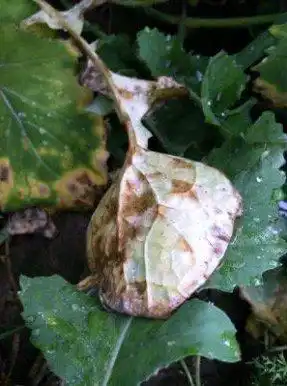 Nature’s Organic Garden Solves the Problem of Sick Soil Sick Plants
Nature’s Organic Garden Solves the Problem of Sick Soil Sick Plants
Sick Soil Sick Plants is generally a result of soil-borne diseases that result from a reduction of soil organisms. Restoring beneficial organisms that attack, repel, or otherwise reduces disease-causing pathogens will make your soil disease-suppressive. Below we discuss sick soil and how it got that way, and what it takes to heal your garden soil.
Plant diseases
Plant diseases result when a susceptible host and a disease-causing pathogen meet in a favorable environment. If anyone of the three conditions is not present, there would be no disease.
- Cannot become established
- Become established, but no disease is present.
- Become established, produces disease for a short time, and then declines
A teaspoon of typical grassland soil has between 600 to 800-million bacteria that are members of perhaps 10,000 species. There are several miles of fungi and as many as 5,000 species of fungi per teaspoon of soil. There are 10,000 individual protozoa split into three main groups. The groups are flagellates, amoebae and ciliates, and perhaps 1,000 species of protozoa. You will also find between 20 to 30 beneficial nematodes, which are members of as many as 100 species. Root-feeding nematodes are relatively scarce in truly healthy soils.
Sick Soil Sick Plants Chemical Warfare
As we try to overcome plant diseases, we continually develop stronger and stronger chemicals to kill-off the pathogens.
Chemicals treatments kill more than the pathogens
Over time chemical intervention only makes things worst! Originally, Methyl bromide was applied once every five years, but not today. Methyl Bromide was to be phased out in California in 2005 but is still used on the strawberry crop. Good luck with those berries you have purchased in local farmers’ markets and stores. Check out the EPA under the Allowed Uses tab to verify this year’s exemptions phasing out methyl bromide
Solution
Until we improve soil life, we will continue the pesticide routine.
- Adding beneficial soil organisms and the food they need to generate the highest number and diversity of soil organisms.
- Higher the diversity of soil organisms, the more stable the soil’s biological system
Sick Soil Sick Plants Solution Strategies
Specific Suppressive – one organism directly defeats a known pathogen.
- General Suppressive – high biodiversity of microbial populations creates adverse conditions for plant diseases to develop
- Pathogens cannot become established
- or become established, but no disease is present
- Pathogens become established, produces disease for a short time, and then declines
Suppressive
- Induced resistance – vaccinated plants using a weakly virulent pathogen
- Direct parasitism – consumption of pathogens by non-pathogens
- Nutrient competition – the greater the microbial biomass, the less carbon, nutrients, and energy available for pathogens
- Direct inhibition – antibiotics secreted by beneficial organisms inhibit pathogens
- Soil Ph – raising or lowering the ph level inhibits specific pathogens
- Potato Scab – ≥ ph 5.2 more severe
- Physical barrier
- Antibiotics and other toxins
- Nutrient competition
- Healthier plants
Crop Rotation
- Use Crop rotation to inhibit the food source for certain types of pathogens
Chemicals
- Ammonia nitrate increases Fusarium (Tomato Wilt) lowers ph levels
- Nitrate nitrogen plus high ph levels reduce Fusarium
- Calcium nitrate plus high ph levels decrease Fusarium
- High Potassium levels retards Fusarium in tomatoes
Compost
- As the compost matures, it becomes more suppressive.
- Mature organic matter is digested compost.
- Immature organic matter is processed by anaerobic and aerobic processes that favor colonization by pathogens.
- Compost acts as a food source and shelter for the antagonists that compete with plant pathogens, those organisms that prey on and parasitize pathogens, and those beneficial organisms that produce antibiotics.
Plants
Compost and compost teas activate disease resistance genes in plants.
These genes mobilize chemical defenses against the pathogen invasion, although often too late to avoid the disease. Plants growing in compost, however, have these disease-prevention systems already running.
Soil-borne diseases are a result of a reduction in diverse soil organisms. Restoring beneficial organisms that attack, repel, or otherwise antagonize disease-causing soil organisms reduces their populations to a manageable level. Beneficial organisms added directly to the soil environment will be more potent using compost and other organic amendments. Compost quality determines its effectiveness at suppressing soil-born plant diseases.
